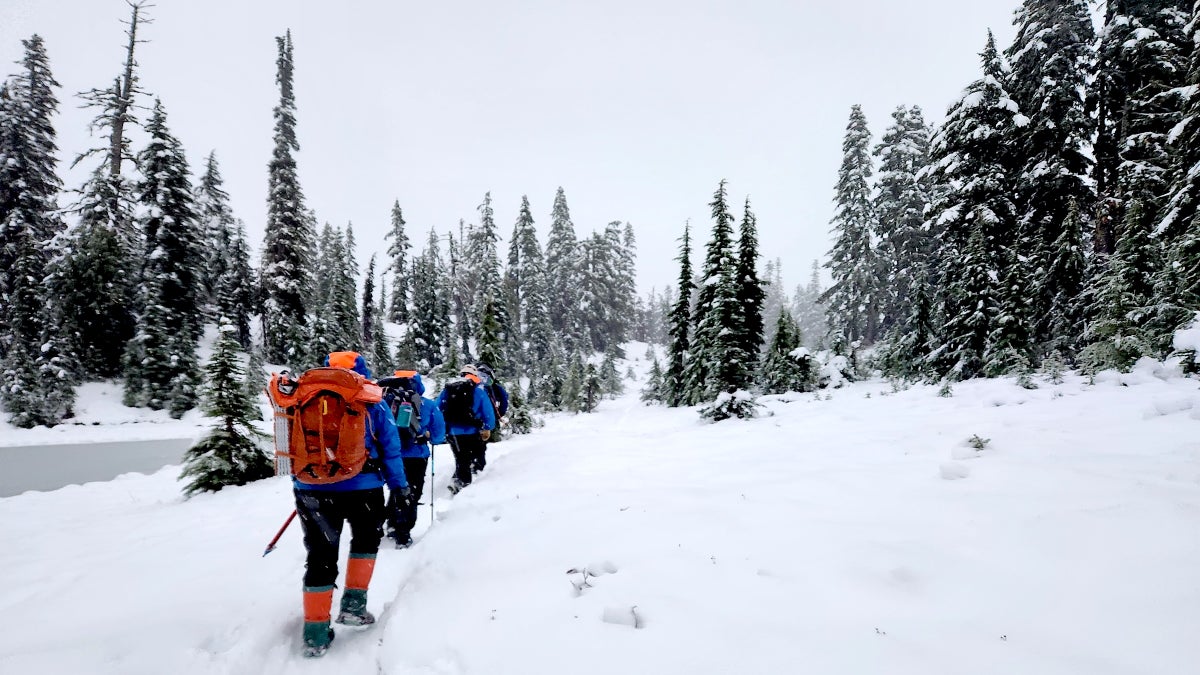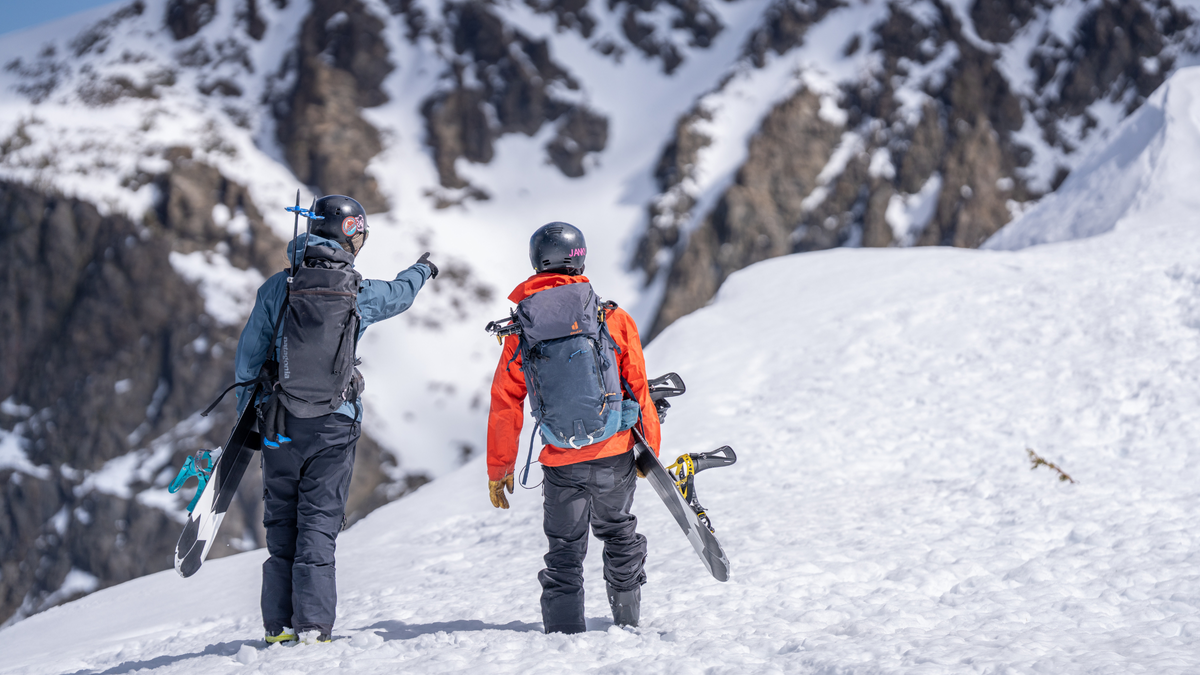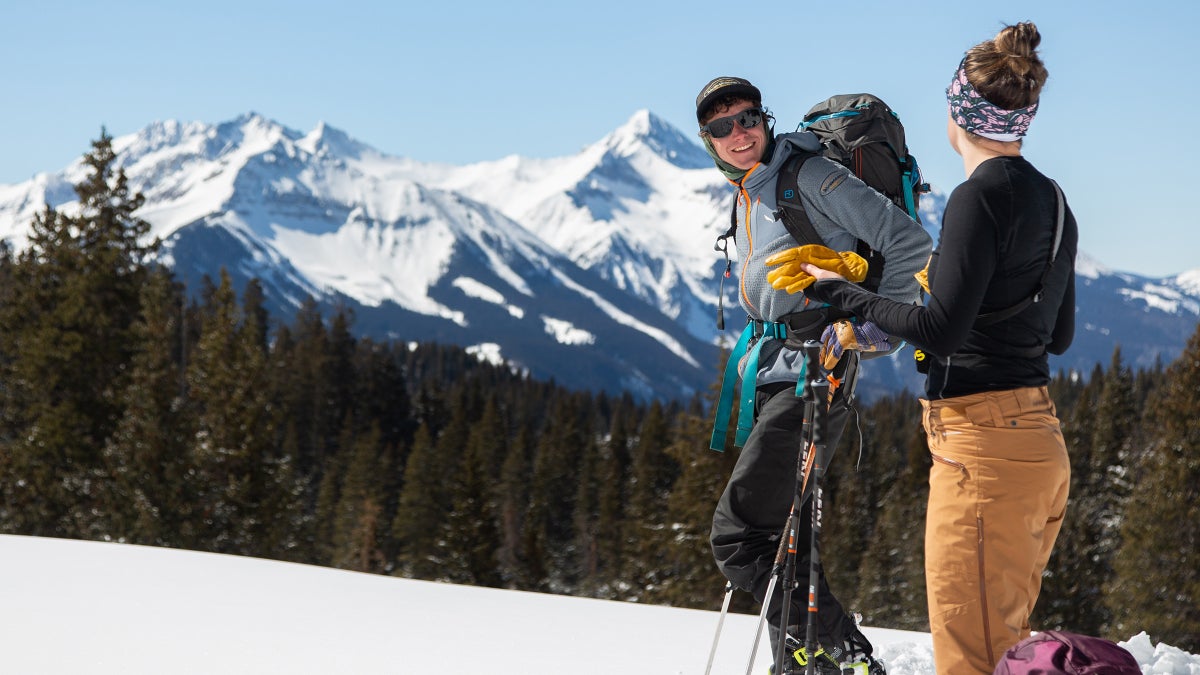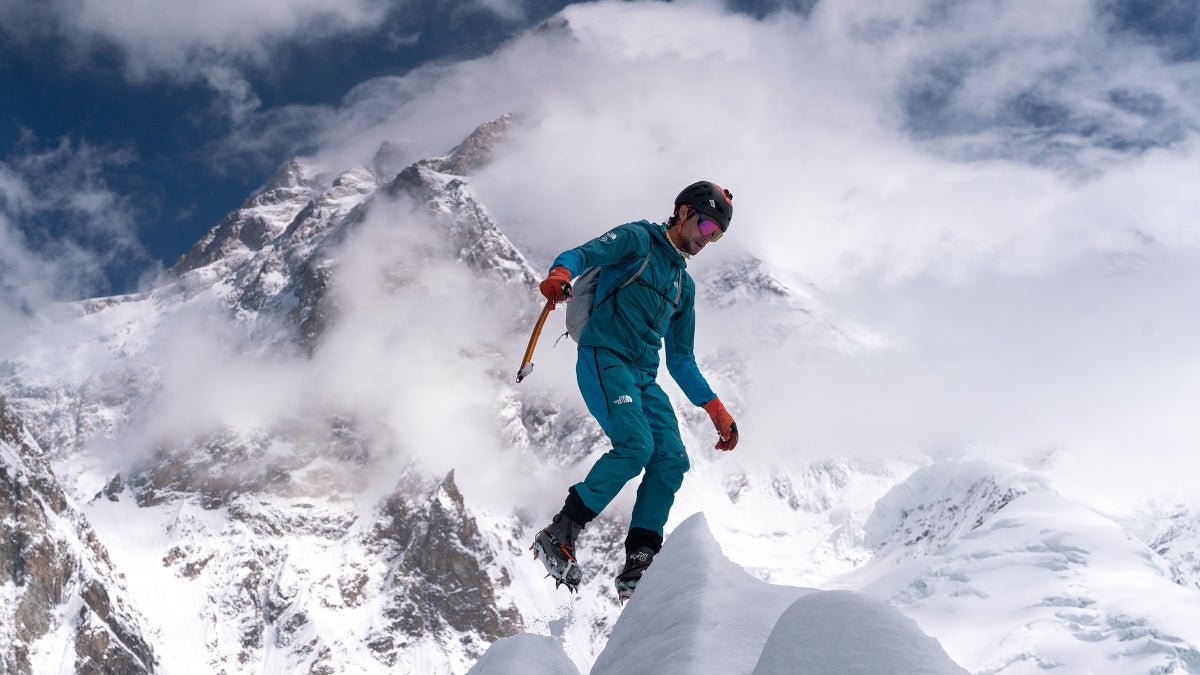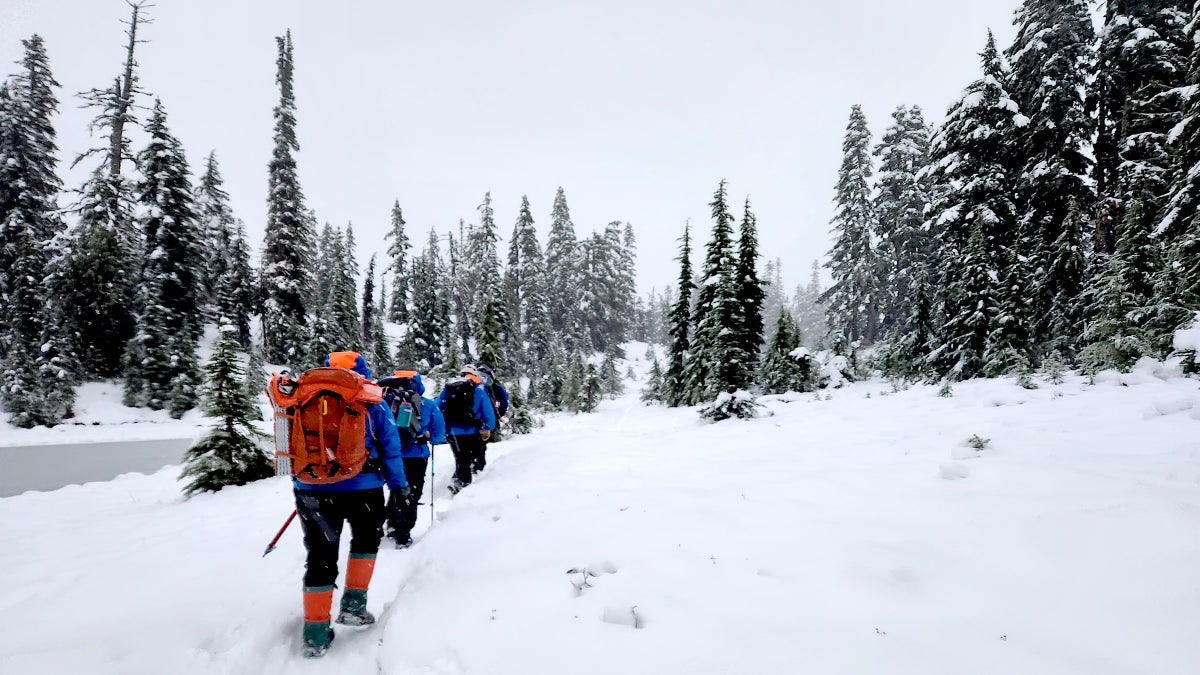
When two Washington State hikers set out on October 19 for their day trip in the high-elevation Snoqualmie region, the weather was cold but otherwise pleasant. But soon after they began hiking, a cold-weather system passed over the region, dumping unexpected snow and prompting a rescue situation.
According to a report from the Kittitas County Sheriff’s Office, rescuers responded to an SOS call shortly before 11 A.M. from the two lost hikers, whose names were not released. The two had become stuck in the Alpine Lakes Wilderness area, roughly 90 miles east of Seattle.
“Over text-to-911, the pair reported they were lost, wet, and cold, with no shelter but a blue plastic tarp. They were unable to make their way off the snowy mountainside where they were perched,” authorities wrote on Facebook. Because of the snowy conditions and rugged terrain, the agency also requested volunteers from Kittitas County Search and Rescue, Seattle Mountain Rescue, and King County Search and Rescue.
The two hikers had lost their way in unexpected snow near Peggy’s Pond Trail, an 11-mile round-trip hike in the Snoqualmie region with 2,300 feet of elevation gain. With a high point of 5,600 feet, the difficult trail briefly joins the Pacific Crest Trail, according to the Washington Trails Association.
“The coordinated rescue team geared up and hiked five miles through challenging conditions to find the hikers, wet and cold but uninjured. They helped the pair off the slope and out of the wilderness,” said the sheriff’s department.
Peggy’s Pond is located in the Alpine Lakes Wilderness area in the Central Cascades Region of Washington state. Spanning approximately 394,000 acres with 47 trailheads and 615 miles of trail, it is a popular area for hikers, climbers, and other outdoor rec groups throughout the year, writes the U.S. Forest Service on its website.
Recreating in alpine, high-elevation wilderness areas comes with risk—especially in late October, when temperatures can quickly plummet—and rescue stories like these serve as a reminder that snowy conditions and extreme weather can roll in at any moment. Weather systems can move into an area without warning, sometimes in just a few minutes. Unexpected rain, thunderstorms, high winds, or snow can quickly turn an otherwise unassuming hike into a full-blown rescue scenario.
Heading into cooler months and temperature drops, officials are reminding adventurers to come prepared for anything.
“As we move deeper into fall, remember that mountain conditions can change fast. If you’re heading out, always carry the 10 Essentials and plan for how you’ll stay warm and dry if your trip takes longer than expected,” said Kittitas County Sheriff.
Those 10 essentials include:
- Navigation tools, like a map, compass, or GPS.
- Sun protection, such as sunglasses, sunscreen, and a hat.
- Insulation for a variety of weather conditions, which can include a jacket, hat, gloves, rain shell, and thermal underwear.
- Lumination for shorter days and less light. Make sure to bring a flashlight, lantern, or headlamp.
- First aid supplies that include any required medications.
- Fire starters like matches, lighters, and other fire starters.
- A repair kit for a variety of fixes, including duct tape, a knife, a screwdriver, and scissors.
- Nutrition and food.
- Hydration, such as hydration salts, as well as plenty of water and water treatment supplies
- Emergency shelter, like a tent, space blanket, tarp, or bivy.
The post A Rescue in Washington State Is a Reminder that Blizzards Can Pop Up When You Least Expect It appeared first on Outside Online.










